| Home →Survival |
|
| Generally speaking, "survival" falls into one of two broad categories: Staying alive until help arrives and you're rescued Living in the wilderness as a way of life The emphasis here is mostly on the second approach, although the two overlap, of course. The first approach would include, for example, how to utilize your vehicle for helping you to stay alive, advice on whether you should try to hike out back to civilization or not, and so on. There's very little of that kind of material here (at least so far). The focus here is on living in the wilderness in a primitive fashion. That means without guns, axes, other manufactured items, log cabins, and so on. Although, again, manufactured items are not excluded from the material that is presented here. Of course, all the material presented here can aid you in both staying alive until help arrives, as well as in living in the wilds in a primitive or semi-primitive fashion, whether it be as a hobby or in a conscious effort to live close to the land. |
|
DISCLAIMER  All of the information on this website is offered with the assumption that you and others will exercise proper caution and care in doing any of the things that are presented on this site. All of the information on this website is offered with the assumption that you and others will exercise proper caution and care in doing any of the things that are presented on this site.  YOU, and ONLY YOU, are responsible for the use to which you put this material. Take responsibility for your own actions. YOU, and ONLY YOU, are responsible for the use to which you put this material. Take responsibility for your own actions.  Some activities related to wilderness survival can be dangerous if done without proper care and attention. Please be careful and attentive when engaging in any of these activities. Some activities related to wilderness survival can be dangerous if done without proper care and attention. Please be careful and attentive when engaging in any of these activities.  In other words be reasonable, responsible, take proper precautions , and exercise common sense. In other words be reasonable, responsible, take proper precautions , and exercise common sense.  The techniques shown on this website are meant solely for use in primitive wilderness survival situations. Please note that in most places it is illegal to use these methods to capture animals unless you are actually in a survival situation. The techniques shown on this website are meant solely for use in primitive wilderness survival situations. Please note that in most places it is illegal to use these methods to capture animals unless you are actually in a survival situation. |
|
| Fire from a Can of Coke and a Chocolate Bar Fire by Cans, Part II Fire Basics Uses of Fire Fire From Ice Fire from Water Bow Drill Hand Drill Pump Drill Fire Piston Fire Plow Fire Saw Fireboards Fire Materials Uses of Fire Flint and Steel Reflectors Magnifiers Two Stones Lava Carbide Magnesium & Ferrocerium Batteries Other fire-making methods Spontaneous Combustion Tinder Tinder Fungus Various Friction Fire Woods and Their Relative Usefulness Something's Burning in the Kitchen |
|
Water Purification of Water Sources of Water 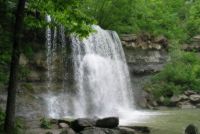 |
|
Shelter Debris huts Wigwams Snow shelters Thatch shelters Brush shelters Trees Caves Natural shelters Scout pits Yurts Teepees 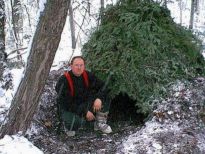 |
|
|
|
|
|
Clothing Birch bark shoes Hats Snow goggles Buttons 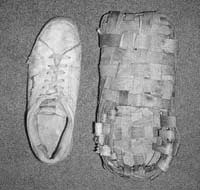 |
|
| I once asked Stalking Wolf, "Grandfather, how come you're not cold in the winter or hot in the summer?" He said, "I am, but heat and cold do not bother me." I asked why not, and after a long pause in which he seemed to be weighing whether or not I was ready for his answer, he said, "Because they're real." -- Tom Brown Jr, from Tom Brown's Field Guide to Nature Observation and Tracking |
|
Cordage Cordage from various materials: Dogbane, Leatherwood, Roots, Agave, Swamp Milkweed, Nettles, Basswood Pictures of Finished Cordage Techniques Collecting & preparing materials 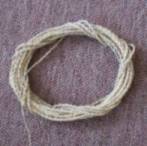 |
|
Traps Figure 4 deadfall trigger "No-knife" Figure-4 deadfall trigger "One-stick" Figure-4 deadfall trigger "No-knife", "One-stick" Figure-4 deadfall trigger Paiute Deadfall Paiute Spring Stick Bait Stick Deadfall Split Stick Deadfall Friction Point Split StickTrigger John McPherson Style Deadfall Spring Traps 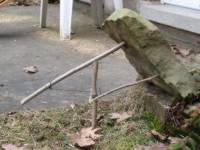 |
|
|
|
Snares Rolling Snare Plug Snare Bird Snares Pencil Snare 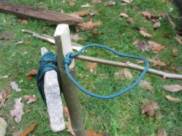 |
|
|
Hunting Bow & arrow Slings Throwing sticks Blowgun Animal calls stories 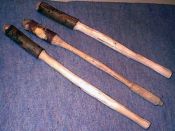 |
|
Food & Cooking Edible & poisonous wild plants & fungi Finding and preparing wild foods Cooking methods 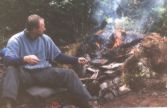 "If you have a choice to do a vision quest or a week long survival, do the survival. You will learn so much more" --Tom Brown Jr. Hides Hides being prepared, techniques, experiences "If you have a choice to do a vision quest or a week long survival, do the survival. You will learn so much more" --Tom Brown Jr. Hides Hides being prepared, techniques, experiences 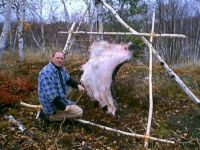 |
Containers Making baskets, bowls, and other containers Birchbark, wood, hide, twining, pottery, natural found containers Stone containers 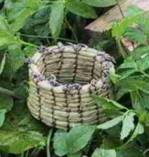 |
|
| "Over the years I have come to realize the importance of all physical skills in the philosophy of living as one with the Earth. It was not just the skills of tracking and awareness that are important, but also the skills of survival. In the times before the reservations, according to Grandfather, the Native Americans held all practice of the physical skills in the same esteem that they held the highest spiritual ceremonies and sacred objects. As the sacred, religious skills were for the survival of the spirit, the physical skills were for the survival of the flesh. One could not exist without the other, for both were considered to be sacred gifts from the Creator." -- Tom Brown Jr, from The Science and Art of Tracking |
|
Stone Working with stone to make stone containers, decorations, lamps, tools 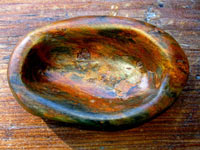 |
|
|
|
|
|
|
|
|
|
|
|
|
Winter Snowshoes Snow goggles Shelters Fire More  |
|
Vision Snow goggles Survival visionwear  |
|
| Health Personal hygiene, health Illness and injury Snakebite, rabies Lyme Disease |
|
Navigation Tips on how to find your way in the wilds Improvised compasses 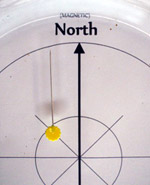 |
|
|
|
|
|
|
|
|
|
|
|
| What is life? It is the flash of a firefly in the night. It is the breath of a buffalo in the wintertime. It is the little shadow which runs across the grass and loses itself in the sunset. --Crowfoot, Blackfoot warrior and orator |
|
|


 All of the information on this website is offered with the assumption that you and others will exercise proper caution and care in doing any of the things that are presented on this site.
All of the information on this website is offered with the assumption that you and others will exercise proper caution and care in doing any of the things that are presented on this site.  YOU, and ONLY YOU, are responsible for the use to which you put this material. Take responsibility for your own actions.
YOU, and ONLY YOU, are responsible for the use to which you put this material. Take responsibility for your own actions.  Some activities related to wilderness survival can be dangerous if done without proper care and attention. Please be careful and attentive when engaging in any of these activities.
Some activities related to wilderness survival can be dangerous if done without proper care and attention. Please be careful and attentive when engaging in any of these activities.  In other words be reasonable, responsible, take proper precautions , and exercise common sense.
In other words be reasonable, responsible, take proper precautions , and exercise common sense.  The techniques shown on this website are meant solely for use in primitive wilderness survival situations. Please note that in most places it is illegal to use these methods to capture animals unless you are actually in a survival situation.
The techniques shown on this website are meant solely for use in primitive wilderness survival situations. Please note that in most places it is illegal to use these methods to capture animals unless you are actually in a survival situation.






 "If you have a choice to do a vision quest or a week long survival, do the survival. You will learn so much more" --Tom Brown Jr. Hides Hides being prepared, techniques, experiences
"If you have a choice to do a vision quest or a week long survival, do the survival. You will learn so much more" --Tom Brown Jr. Hides Hides being prepared, techniques, experiences 




